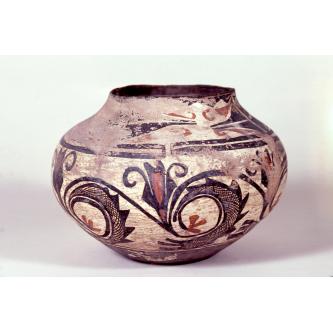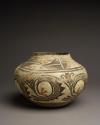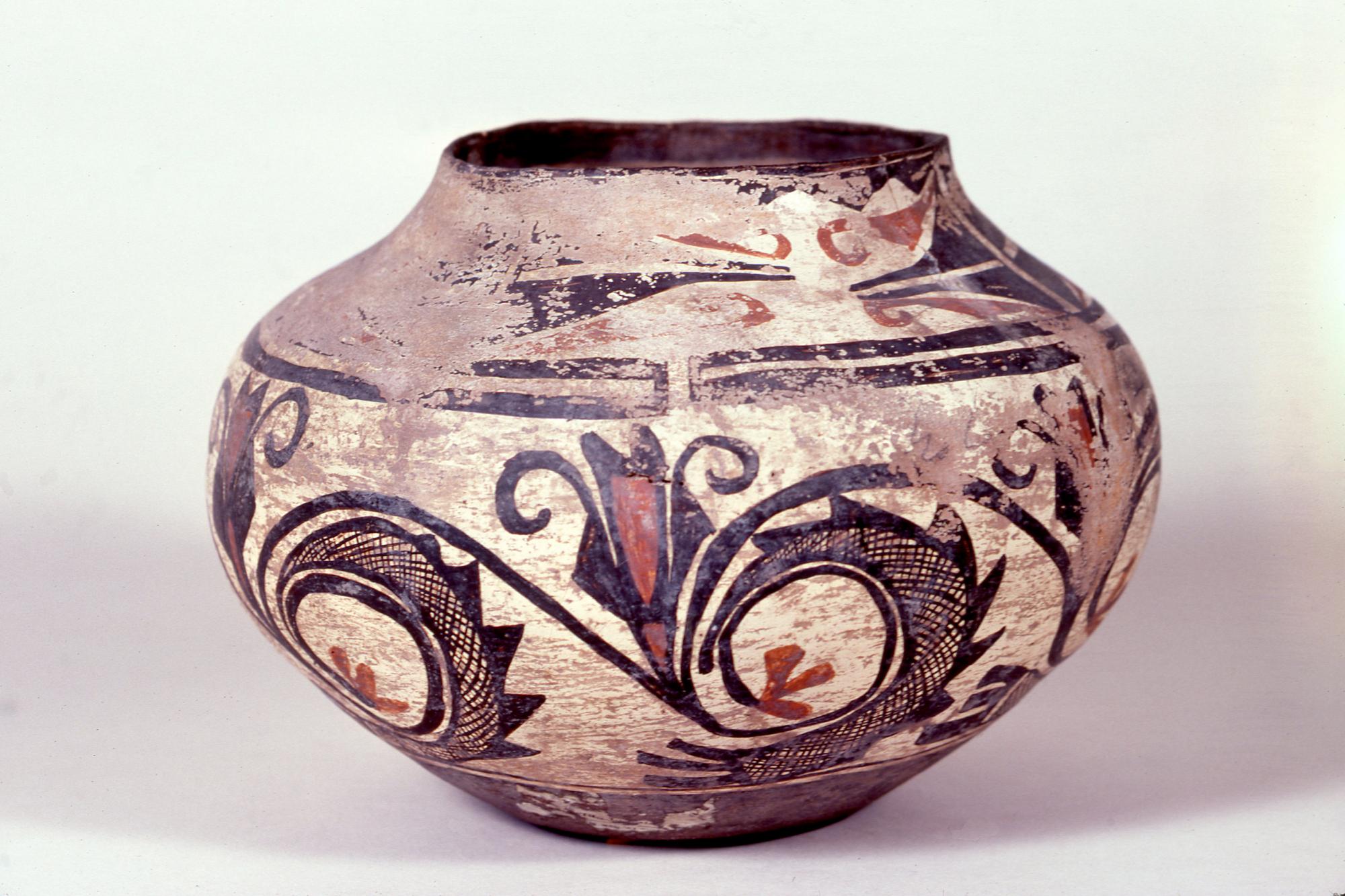
Photograph by Addison Doty. Copyright 2010 School for Advanced Research.
Water jar | K'yabokya de'ele
Date: c. 1890
Artist or Maker: Unknown
Dimensions:
20.3 x 27.9 cm (8 x 11 in.)
Medium: clay | paints
Credit Line: Indian Arts Fund purchase for the permanent collection.
Place Made:
Zuni Pueblo, McKinley County, New Mexico, Southwest, United States, North America
Object Number: IAF.512
Not on view
Tribal Collection Review RemarksJim Enote and Octavius Seowtewa during collection review visit February 17 and 18, 2010 (Events Record “Collection Review: Zuni Tribe, Review 4”): No remarks for this jar.
As per Jim Enote and Octavius Seowtewa during collection review visit Nov. 30 and Dec. 1, 2011 (Events Record “Collection Review: Zuni Tribe, Review 7”): The rim is painted black. A water wave design is painted in black immediately below the rim. The neck is decorated with tail feathers (black) and birds (red). The neck and body are separated by two thick lines with a line break. The body is decorated with a continuous, repeating two-bird design, one with a red crest on the inside of the design, and one with a black crest on the outer side of the design (the “outer” bird is filled with rain line hatching and the black triangles are the crest). A thin border line separates the body from the base. The base is a solid dark brown. There is some wear on the bottom.
The word for a water jar in Zuni is “k'yabokya de'ele,” which translates to “water container vessel” in English. The intended use for these jars was to store and carry water, but they could also be used to store other items.
In Collection(s)
Bibliography:
Pueblo Designs
- Pg. 39
- Fig. Plate XI, 5
The Indian Arts Research Center, in collaboration with Native American community scholars, strives to present accurate collections records. Records may be updated as new information becomes available and is reviewed with the Native American community having cultural affinity to particular items. Please write to iarc@sarsf.org if you have questions or concerns related to the documentation.


